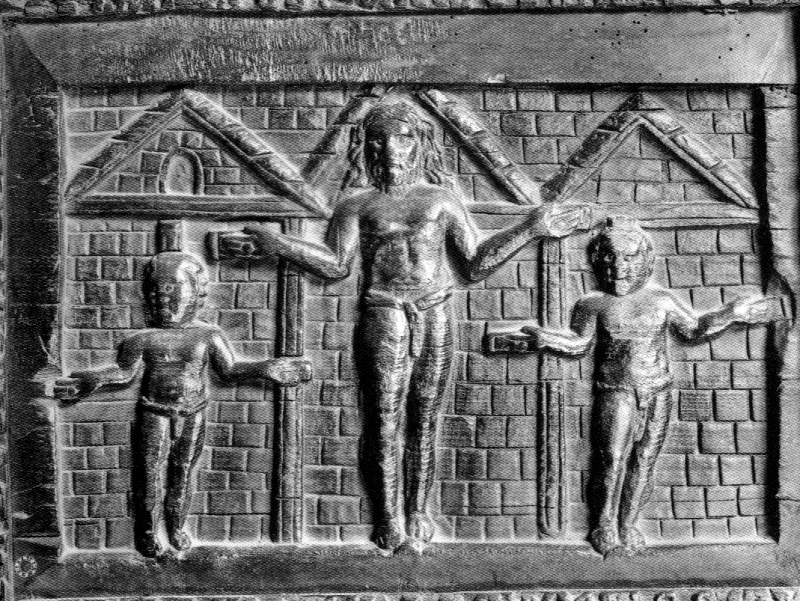Jesus and the Two Thieves

Circa 430-35
Carved cypress panel from the doors of the Basilica of Santa Sabina, Rome
This work would have been made less than a century after the practice of crucifixion was ended by the Emperor Constantine. The most notable trace of the previous century's reticence about the crucifixion is the absence of crosses. The posture of the arms has a similar effect, suggesting the orant pose more than the V shape of a physiologically accurate rendering. Unlike the naked victims of historical crucifixions, the three figures wear the perizoma favored in Christian art for modesty. The one sure sign that these are crucified figures is the presence of nails in their palms. (A nail also seems to be represented in the left foot of Christ.)
Read more about the Crucifixion.
Source: Merback